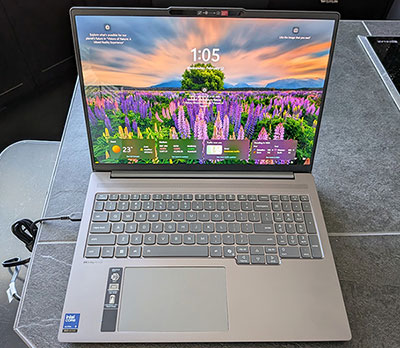Robotaxi services are expanding rapidly, with companies like Lyft and Uber working to replace human drivers with AI. While there have been challenges in cities like San Francisco, the technology is improving, and we may be on the cusp of one of the first large-scale AI job replacement efforts. This shift could address a key issue in ride-sharing by aligning revenue more directly with users, but it won’t solve a deeper problem shared with social media: a decoupled revenue business model, where the people using a service aren’t necessarily the ones funding it.
This transition will be significant, as it will impact not only the ride-sharing industry but also the livelihoods of many drivers. The introduction of robotaxis may fix some issues with ride-sharing, but it will also create new challenges, such as what to do with the displaced drivers. As AI takes over more jobs, figuring out how to support those who have lost theirs will become an increasingly complex problem.
Let’s delve into the issue of decoupled revenue and then explore my Product of the Week, a new Lenovo notebook featuring a brand-new processor from Intel.
The Problem With Decoupled Revenue
Both social media and ride-sharing platforms have a decoupled revenue model, where the people paying for the service aren’t treated as the primary customers. On social media, advertisers fund the platforms, while users engage with content as if they were the primary customers. Similarly, in ride-sharing, the platform enables car owners to monetize their vehicles, but the riders are the ones paying for the service.
In both cases, the platform prioritizes those who provide the revenue, such as advertisers for social media and riders for ride-sharing, while those who power the service, like content creators and drivers, are treated as cost centers rather than valued participants. This decoupling means that those who make the service possible, such as Uber and Lyft drivers and social media users, are often overlooked, and their needs are subordinated to those of the entities providing the funding.
Managers often fail to recognize the importance of the people who drive the revenue. I once knew a general manager who believed that his plant would run better without sales reps, forgetting that they were the reason the plant had business in the first place. This kind of thinking is not unique, and it’s surprising how many high-ranking executives don’t seem to understand how their businesses actually work.
Businesses generally function better when the people using a service and those funding it are the same. When revenue and users are decoupled, platforms risk alienating the people who keep them running. It’s essential to recognize the value of the people who drive the revenue and treat them as primary customers.
Will Robotaxis Disrupt or Fix Ride-Sharing?
The introduction of robotaxis may either fix or break the ride-sharing industry. If Uber and Lyft transition to robotaxi services, the people who use the service to monetize their cars may be negatively impacted, unless they can find a way to compete with AI drivers. However, this could also eliminate the problem of drivers being treated as cost centers rather than customers.
One possible solution is for ride-share car owners to buy and maintain their own autonomous vehicles, allowing them to earn a significant part of the revenue. However, this would require significant investments in maintenance, insurance, and liability concerns. Additionally, the lack of automated charging stations for electric vehicles is a significant hurdle that needs to be addressed.
Given these challenges, it’s likely that Uber and Lyft will choose to own their fleets and invest in unique charging ports, automated charging stations, and standby parking lots to accommodate fluctuations in demand.
Initially, There Would Be a Blend
Currently, robotaxi technology is best suited for urban areas, but for longer distances, human drivers may still be needed until autonomous driving technology improves. We may see a blend of autonomous cars and airplanes for service within a state, with the potential for localized landing pads where riders can transfer from their autonomous car to an autonomous plane.
There have been concepts proposed for autonomous lifting bodies that can attach to cars, allowing them to bypass traffic or travel longer distances. However, safety concerns may limit the adoption of such technology.
Wrapping Up
While robotaxis may improve ride-sharing by aligning revenue with users, the impact on displaced drivers will be significant. Some may find work remotely, taking control of robotaxis when they encounter problems, but this will require far fewer drivers than today. The introduction of AI will create new challenges, and figuring out what to do with the people who have lost their jobs will become increasingly complex.
As AI takes over more jobs, we can expect significant changes in various industries. For users, the experience will become more convenient, with lower prices, better service, and less concern about driver safety. However, there will be fewer interesting conversations, although generative AI may provide a solution for this.
Now, let’s move on to my Product of the Week, a new Lenovo notebook featuring a brand-new processor from Intel.

Lenovo IdeaPad Pro 5i Prototype

The new Lenovo IdeaPad Pro 5i prototype is an impressive device, featuring Intel’s 9u processor and a 16-inch OLED screen. The laptop is one of Intel’s first AI PCs and uses the Ultra 9 processor. The 16-inch OLED screen is a significant improvement, and the efficiency of OLEDs has increased, making them less of a battery drain.
I prefer a larger screen, as I typically work on a desktop machine, and the extra inch on the 16-inch screen makes a noticeable difference. However, this means I won’t be able to work on the laptop during flights, which is not a significant issue, as I usually watch movies to unwind.
The price of the laptop is expected to be around $1,500, which is reasonable for a 16-inch OLED with discrete graphics. The Intel ARC graphics use a blend of AMD’s and Nvidia’s approaches to upscaling, and the IdeaPad Pro 5i is the first laptop to feature these graphics.
The drivers on this prototype were undergoing changes, but I expect the battery life to be between 10 and 20 hours, depending on usage. The graphics are more than adequate for my needs, and the laptop’s NPU is light, but the total TOPS is close to 100, with the GPU contributing additional AI processing power.
The laptop won’t run certain AI applications until Microsoft enables them, but it’s nice to have an AI PC from Intel, as most companies test their hardware on Intel platforms. Overall, the Lenovo IdeaPad Pro 5i prototype with ARC graphics is an impressive device, making it my Product of the Week.
Source Link





